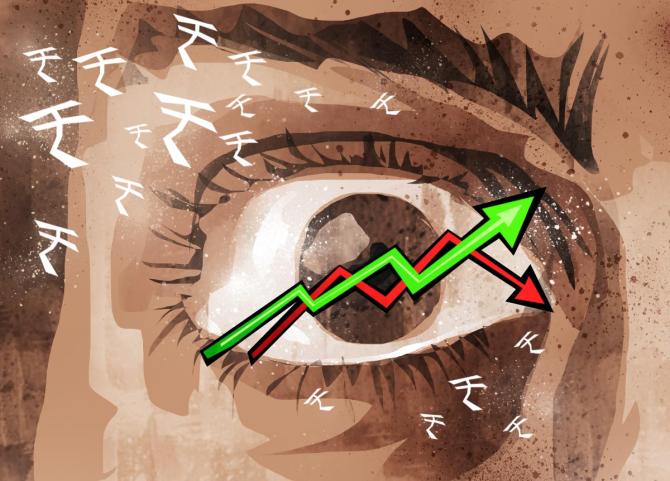'India has entered an economic super-cycle driven by a housing cycle turnaround.'

"We expect large-caps to outperform broadly during the initial recovery phase, while mid and small-caps would get better traction with lag," Nishant Srivastava, head of retail broking and distribution at Reliance Securities, tells Ashley Coutinho/Business Standard.
What is the outlook for 2022 for Indian equities?
Despite the stellar run in 2021 that saw most global equity markets record healthy gains, we remain bullish on equities for 2022.
Though we rule out the easy money making phase that was backed by liquidity from most central banks, we believe the returns from the market will track growth in corporate earnings.
India has entered an economic super-cycle driven by a housing cycle turnaround.
We like the stability of macroeconomic parameters that should support consumption and investments, leading to continued earnings estimate upgrades.
Our year-end 2022 target for Nifty is 20,000, implying a 13 per cent upside from current levels.
What are the key risks?
We expect the market to remain volatile in the fourth quarter of financial year 2021-22 (Q4FY22) amid uncertainty pertaining to the Omicron variant and the US Fed's tapering.
Inflation, winding down of stimulus by major central banks globally, developments in China, and the impact of the new Covid variants, if any, are some of the key risks likely to keep the markets choppy in 2022.
How do you view the mid and small-cap space?
We expect large-caps to outperform broadly during the initial recovery phase, while mid and small-caps would get better traction with lag.
Softening in commodity prices coupled with demand recovery would support higher profitability of these companies going forward.
Therefore, we remain positive on this space as well.
Which sectors will bear the brunt of the Omicron spread?
We would see an impact on multiplexes.
The Delhi market contributes 8-10 per cent of the box office collections and if similar moves are taken by other states, then that particular segment could see some challenges from a near-term perspective.
Most of the tier-I hospitals will get some benefit.
Structurally, their peak capex is over and things could get a lot better for them.
But increasing hospitalisation this quarter could pose challenges as a lot of elective surgeries will get postponed.
We still need to watch out for how this variant shapes up.
It is expected to be milder and may not really challenge the healthcare infrastructure the way the second wave had done.
What is your view on banking and IT stocks?
The risk-reward appears favourable for most of the banks.
But the bigger question is whether we will see double-digit credit growth.
While the demand from MSMEs for credit is high, companies may borrow less from banks, especially if the primary market remains buoyant.
IT continues to deliver and we believe that in the next two to three years, IT spend is going to be good.
How has the year been for brokers?
The emergence of discount online brokers has turned the industry into a business of high volumes and wafer-thin margins, prompting several large publicly traded firms to expand into lending, wealth management and even insurance.
The costs and efforts needed to meet stricter compliance and reporting obligations is also hurting brokers.
Sebi has tightened compliance and reporting rules in recent years as it seeks to address the risk of brokers not acting in their customers' interests.
What is the impact of peak margin norms on brokerages?
Traders are not happy with these norms as they will now have to park more cash towards fulfilling margin requirements for trade.
In fact, trading in futures and options will become more expensive.
Many brokers even feel that the norms are excessively harsh.
Traders have to pay a penalty if the peak margin norms are not followed during a trading session.
Feature Presentation: Aslam Hunani/Rediff.com











